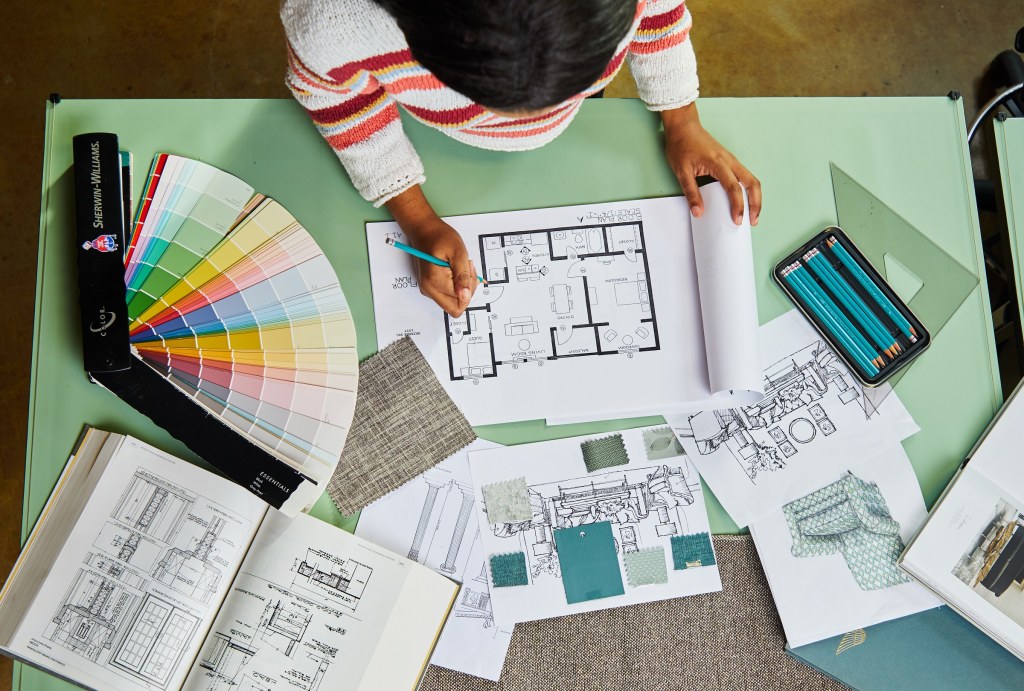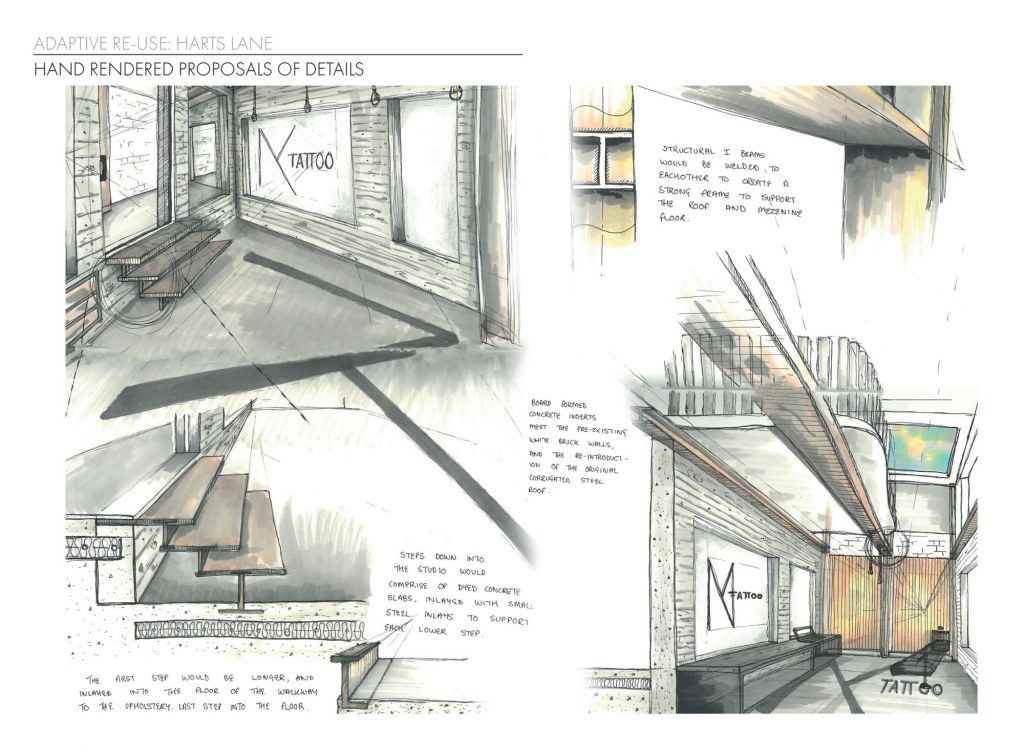Interior Design Undergraduate: Exploring the World of Creativity and Functionality
Dear Readers,
Welcome to the world of interior design undergraduate! In this article, we will take you on a journey through the fascinating realm of interior design, where creativity meets functionality. Whether you are a design enthusiast, a student considering a career in interior design, or simply curious about this field, this article will provide you with a comprehensive overview of what interior design undergraduate entails.
Introduction
Interior design undergraduate is a program that prepares students to become skilled professionals in the art and science of transforming interior spaces. It involves the study of design principles, spatial planning, aesthetics, and the integration of technology to create functional and visually pleasing environments. With a focus on both residential and commercial spaces, interior design undergraduate equips students with the knowledge and skills necessary to create spaces that enhance the quality of life for individuals and communities.
During interior design undergraduate programs, students learn about various design styles, architectural elements, color theory, materials, and techniques. They also gain practical experience through hands-on projects, internships, and collaborations with industry professionals. This combination of theoretical knowledge and practical skills prepares graduates for a wide range of career opportunities in the field of interior design.
Now, let’s delve deeper into the key aspects of interior design undergraduate:
What is Interior Design Undergraduate?

Image Source: cloudfront.net
Interior design undergraduate is an academic program offered by universities and colleges worldwide. It provides students with a comprehensive education in the principles and practice of interior design. Through a combination of coursework and studio projects, students develop a strong foundation in design theory, spatial planning, drafting, computer-aided design (CAD), and other essential skills.
The curriculum of interior design undergraduate programs typically covers subjects such as design history, furniture design, lighting design, sustainable design practices, building codes and regulations, and project management. Students also learn about the relationship between interior design and other disciplines such as architecture, psychology, and sociology.
Who Should Pursue Interior Design Undergraduate?
Interior design undergraduate is an excellent choice for individuals who have a passion for design, possess strong aesthetic sensibilities, and enjoy working with people to create functional spaces. It is suitable for those who have a keen eye for detail, are problem solvers, and possess excellent communication and interpersonal skills.
Whether you are a high school graduate exploring career options or a professional looking for a career change, pursuing an interior design undergraduate program can open doors to exciting opportunities in various industries. From residential design firms to commercial spaces, hospitality establishments, retail stores, and even film and television production sets, interior design professionals are in demand across a wide range of sectors.
When Can You Enroll in an Interior Design Undergraduate Program?

Image Source: rackcdn.com
Most universities and colleges offer interior design undergraduate programs as part of their regular academic calendar. The duration of these programs may vary, but typically range from three to four years for a bachelor’s degree. Some institutions also offer accelerated programs for students who wish to complete their studies in a shorter time frame.
It is advisable to research and identify the institutions that offer interior design undergraduate programs well in advance. Admissions criteria, application deadlines, and program requirements may vary, so it is essential to plan and prepare accordingly.
Where Can You Study Interior Design Undergraduate?
Interior design undergraduate programs are offered by various academic institutions globally. From prestigious universities to specialized design schools, there are numerous options to choose from. Some institutions may have a specific focus, such as sustainable design or technology integration, while others offer a well-rounded curriculum covering all aspects of interior design.
When selecting an institution, it is crucial to consider several factors such as accreditation, reputation, faculty expertise, resources, and opportunities for internships or industry collaborations. It is also beneficial to explore the location and surrounding cultural influences, as they can greatly impact the learning experience.
Why Choose Interior Design Undergraduate?
Interior design undergraduate offers a unique blend of creativity, analytical thinking, and problem-solving skills. It is a field that allows individuals to combine their artistic talents with technical knowledge to create spaces that are aesthetically pleasing, functional, and sustainable.

Image Source: rackcdn.com
By pursuing an interior design undergraduate program, you will have the opportunity to develop a versatile skill set that can be applied to various industries and professional settings. The demand for interior design professionals is expected to grow significantly in the coming years, making it a promising career choice.
How to Succeed in Interior Design Undergraduate?
While pursuing an interior design undergraduate program, it is essential to be proactive and engaged in your studies. Here are some tips to help you succeed:
1. Embrace creativity: Interior design is all about unleashing your creative potential. Be open to new ideas, experiment with different design concepts, and challenge yourself to think outside the box.
2. Develop technical skills: Interior design involves the use of various tools and software. Familiarize yourself with drafting techniques, CAD software, and other industry-standard tools to enhance your technical abilities.
3. Stay updated: The field of interior design is constantly evolving. Keep yourself informed about the latest trends, materials, and technologies through research, attending industry events, and connecting with professionals in the field.
4. Network: Building relationships with fellow students, faculty, and industry professionals can open doors to internships, job opportunities, and collaborations. Attend networking events, join professional organizations, and actively seek mentorship.
5. Be adaptable: Interior design projects often require flexibility and adaptability. Learn to work well under pressure, manage time effectively, and be willing to embrace change and unexpected challenges.
Advantages and Disadvantages of Interior Design Undergraduate
Like any educational pursuit, interior design undergraduate programs have their advantages and disadvantages. Let’s explore them:
Advantages:
Practical Skills: Interior design undergraduate programs provide hands-on experience and practical skills that are directly applicable to real-world projects.
Career Opportunities: Graduates of interior design undergraduate programs have diverse career opportunities in various industries, including residential and commercial design, hospitality, retail, and more.
Creativity and Self-expression: Interior design allows individuals to express their creativity and personal style through the creation of unique spaces.
Impactful Design: Through thoughtful design, interior designers can positively impact the lives of individuals and communities by creating functional and aesthetically pleasing environments.
Collaborative Environment: Interior design projects often involve collaboration with architects, contractors, and other professionals, providing opportunities for interdisciplinary teamwork.
Disadvantages:
Competitive Industry: The field of interior design can be highly competitive, requiring individuals to continually update their skills and stay ahead of emerging trends.
Long Working Hours: Interior designers often work long hours, especially during project deadlines, which can impact work-life balance.
Client Expectations: Meeting client expectations and balancing design creativity with practicality can sometimes be challenging.
Cost Considerations: Interior design projects may involve budget constraints, requiring designers to find creative solutions without compromising on quality.
Continuous Learning: Interior design is a field that requires lifelong learning and staying updated with the latest design trends, materials, and technologies.
Frequently Asked Questions (FAQ)
1. Is a degree in interior design necessary to pursue a career in this field?
No, a degree is not mandatory, but it can significantly enhance your career prospects and provide you with a solid foundation of knowledge and skills.
2. Can I specialize in a specific area of interior design?
Yes, many interior design undergraduate programs offer specialization options such as sustainable design, healthcare design, retail design, or hospitality design.
3. What are some essential qualities of a successful interior designer?
Some essential qualities include creativity, attention to detail, strong communication skills, problem-solving abilities, and the ability to work well with clients and other professionals.
4. What types of software are commonly used in interior design?
Commonly used software in interior design includes AutoCAD, SketchUp, Revit, 3D Max, and Adobe Creative Suite.
5. Can I work as a freelance interior designer?
Yes, many interior designers choose to work as freelancers and establish their own design firms or work on a project-by-project basis.
Conclusion
Interior design undergraduate offers an exciting and fulfilling path for those passionate about creating harmonious and functional spaces. Through a combination of theoretical knowledge, practical skills, and a dash of creativity, aspiring interior designers can embark on a rewarding career journey.
Whether you choose to pursue a bachelor’s degree in interior design or explore specialized areas within the field, the possibilities are endless. So, take the leap and start your journey towards becoming a part of the vibrant world of interior design undergraduate!
Final Remarks
Throughout this article, we have explored the intricacies of interior design undergraduate and provided you with a comprehensive overview of this exciting field. It is important to note that while we have covered various aspects, there is much more to discover and explore within the world of interior design.
Remember, interior design is a dynamic discipline that continuously evolves with societal changes and technological advancements. As you embark on your interior design journey, keep an open mind, embrace challenges, and never stop learning. With dedication, passion, and a touch of creativity, you can carve a successful path in interior design undergraduate and make a lasting impact on the world around you.